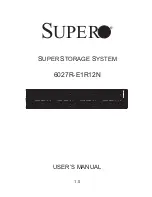
64
D14049.07
March 2010
Grey Headline
(continued)
TANDBERG
VIDEO COMMUNICATION SERVER
ADMINISTRATOR GUIDE
Introduction
Overview and
status
System
configuration
VCS
configuration
Zones and
neighbors
Clustering and
peers
Call
processing
Bandwidth
control
Firewall
traversal
Appendices
Applications
Maintenance
Local Zone and subzones
Configuring the Traversal Subzone ports
The VCS allows you to configure the range of ports used for the media in traversal calls. A single
traversal call can consist of up to 5 types of media (audio, video, far end camera control, dual
streams and BFCP) and each type of media may require a pair of ports – for example, audio and
video each require one port for RTP, and one for RTCP. Separate pairs of ports are required for the
inbound and outbound portions of a call. A single traversal call can therefore take up to 20 ports.
The default range for the ports to be used for media is 50000 - 52399 UDP, but these can be
changed to any values between 1024 and 65533. Ports are allocated from this range in pairs, with
the first port number of each pair being an even number. Therefore the range must start with an
even number and end with an odd number.
To configure the ports used for media in traversal calls:
•
VCS configuration > Local Zone > Traversal Subzone
•
xConfiguration Traversal Media Port Start
•
xConfiguration Traversal Media Port End
!
You must ensure that the port range is large enough to support the maximum number of
traversal calls available on your VCS. A single traversal call can take up to 20 ports (5 pairs
in each direction). So for example, if your VCS is licensed for 5 traversal calls you must
ensure that the range of ports configured for traversal media is at least 100. If you add extra
traversal calls to your system, you must also ensure that the range of ports available is sufficient.
The Traversal Subzone is a conceptual subzone; no endpoints can be registered to it, but all
traversal calls (calls for which the VCS takes the media in addition to the signaling) pass through it.
The Traversal Subzone's purpose is to control the amount of bandwidth used by traversal calls, as
these can be particularly resource-intensive. See the chapter on
Bandwidth control
and the section
on
Bandwidth consumption of traversal calls
for more information on controlling the bandwidth of
traversal calls.
What are traversal calls?
A traversal call is any call passing through the VCS that includes both the signaling (information
about the call) and media (voice and video). The only other type of call is a non-traversal call,
where the signaling passes through the VCS but the media goes directly between the endpoints (or
between one endpoint and another VCS in the call route, or between two VCSs in the call route).
The following types of calls require the VCS to take the media. They are classified as traversal calls
and will always pass through the Traversal Subzone:
•
firewall traversal calls, where the local VCS is either the traversal client or traversal server
•
calls that are gatewayed (interworked) between H.323 and SIP on the local VCS
•
calls that are gatewayed (interworked) between IPv4 and IPv6 on the local VCS
•
for VCSs with Dual Network Interfaces enabled, calls that are inbound from one LAN port and
outbound on the other
•
a SIP to SIP call when one of the participants is behind a NAT (unless both endpoints are using
ICE
for NAT traversal)
All such calls require a traversal call license each time they pass through the Traversal Subzone.
Traversal calls use more resource than non-traversal calls, and the numbers of each type of call
are licensed separately. The VCS has one license for the maximum number of concurrent traversal
calls it can take, and another for the maximum number of concurrent non-traversal calls. You can
increase the number of each type of call available on your VCS by purchasing and installing the
appropriate
option key
.
Note that a non-traversal call on a VCS Expressway will consume a traversal license if there are no
non-traversal call licenses available.
A call is “traversal” or “non-traversal” from the point of view of the VCS through which it is
being routed at the time. A call between two endpoints may pass through two or more
VCSs. Some of these VCSs may just take the signaling, in which case the call will be a
non-traversal call for that VCS. Other VCSs in the route may need to take the media as well, and so
the call will count as a traversal call on that particular VCS.
Traversal Subzone
















































